Tools Required
Removal Procedure

- Ensure that removal of the valve body is necessary before proceeding.
| | Important: The following components can be serviced without removing the valve body from the transmission:
|
| • | The internal wiring harness (2) |
| • | The 1-2 shift solenoid (3) |
| • | The transmission fluid temperature sensor (4) |
| • | The transmission fluid pressure manual valve position switch (5) |
| • | The pressure control solenoid (6) |
| • | The torque converter clutch pulse width modulation (TCC PWM) solenoid (7) |
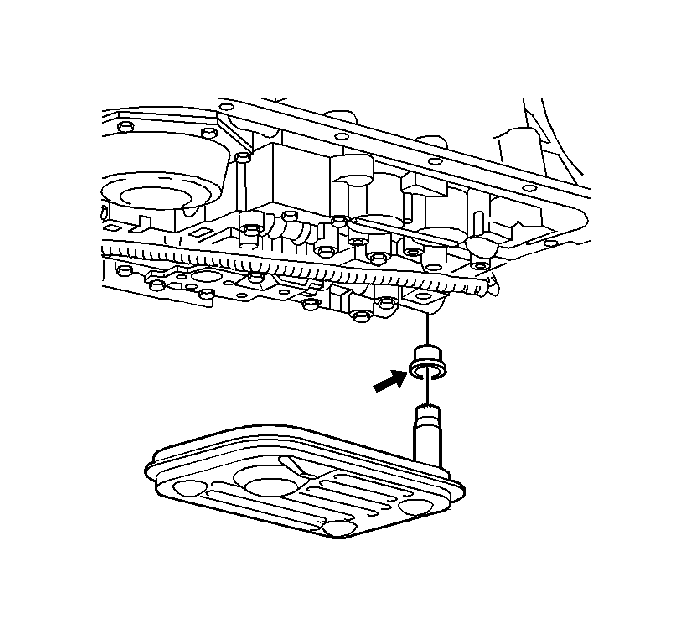
- Remove the fluid level indicator.
- Raise the vehicle. Refer to
Lifting and Jacking the Vehicle
in General Information.
- Remove the oil pan, gasket, and filter. Refer to
Automatic Transmission Fluid and Filter Replacement
.
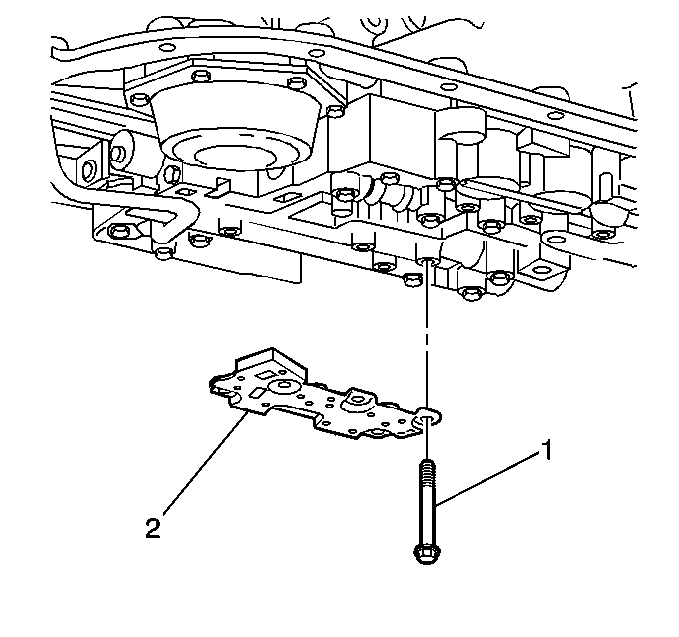
- Disconnect the internal wire harness from the transmission fluid pressure (TFP) manual valve position switch.
Important: Use care not to loose the 5 O-rings that are located between the TFP manual valve position switch and the valve body.
- Remove the control valve body bolts (1) that retain the (TFP) manual valve position switch (2) to the control valve body.
- Remove the TFP manual valve position switch.
- Disconnect the internal wiring harness electrical connectors from the remaining valve body electrical components.

- Remove the lube oil pipe bolt (6) and retainer (7).
- Remove the lube oil pipe (5).
- Remove the bolts and remove the manual shaft detent spring (3).
Important: Keep the control valve body level when lowering it from the vehicle. This will prevent the loss of checkballs located in the transmission case passages.
- Remove the remaining control valve body bolts.
- Carefully lower the valve body down from the transmission case. Use care not to drop the manual shaft valve.
- Remove the control valve assembly (2) which includes the following:
| • | The accumulator housing assembly (1) |
| • | The control valve assembly to the spacer plate gasket |
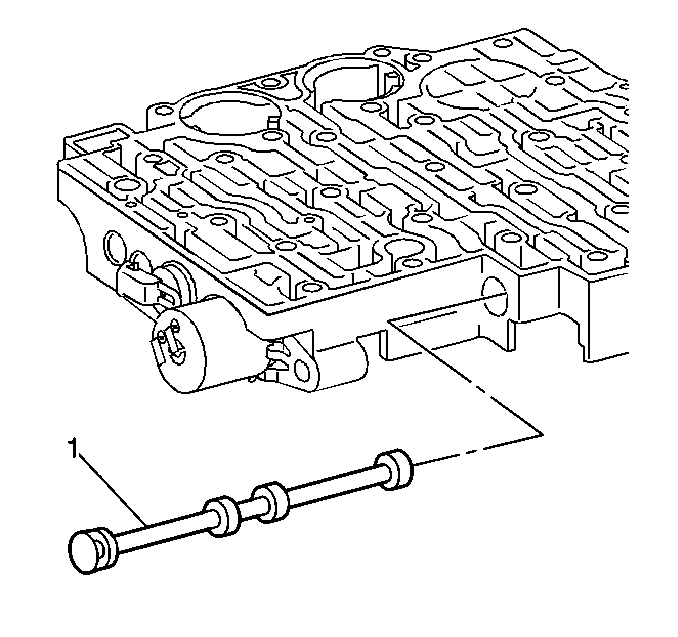
- Remove the manual valve (1) from the control valve body.
- Inspect the manual valve for nicks and burrs.
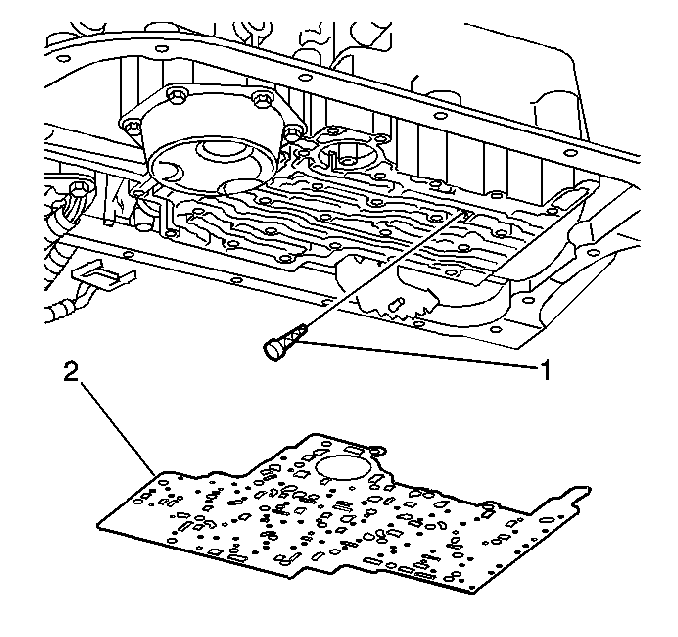
- Remove the spacer plate to case gasket (2) from the case. The gasket may stick to the spacer plate.
- Remove the PWM screen (1) from the case passage.
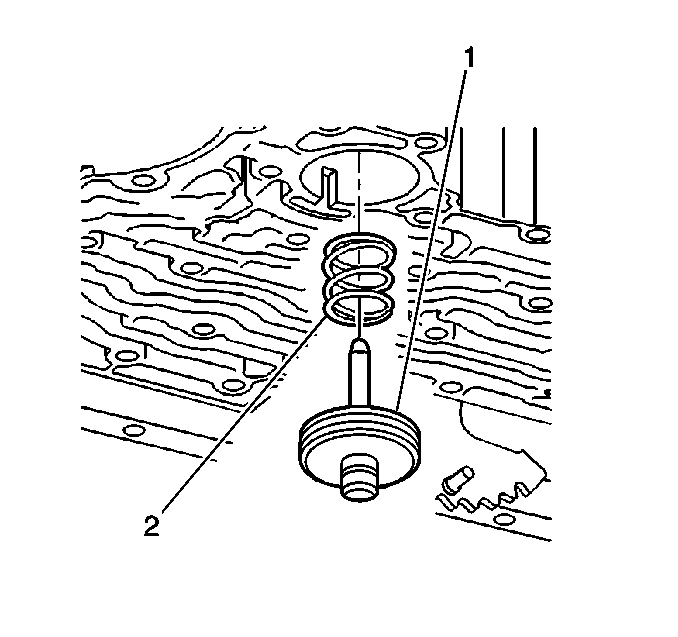
- Remove the manual 2-1 band servo assembly (1).
- Remove the servo piston cushion spring (2).
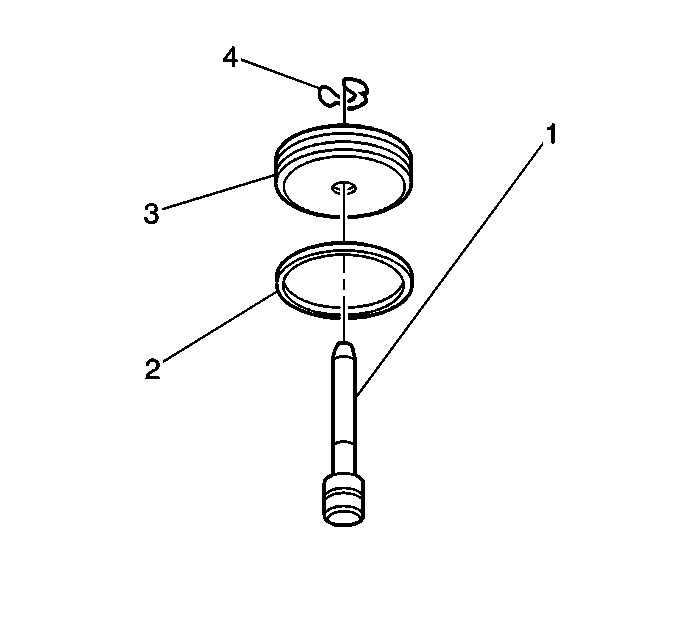
- Remove the manual 2-1 band servo piston pin retainer ring (4).
- Remove the manual 2-1 band servo piston pin (1).
- Remove the manual 2-1 band servo piston seal (2).
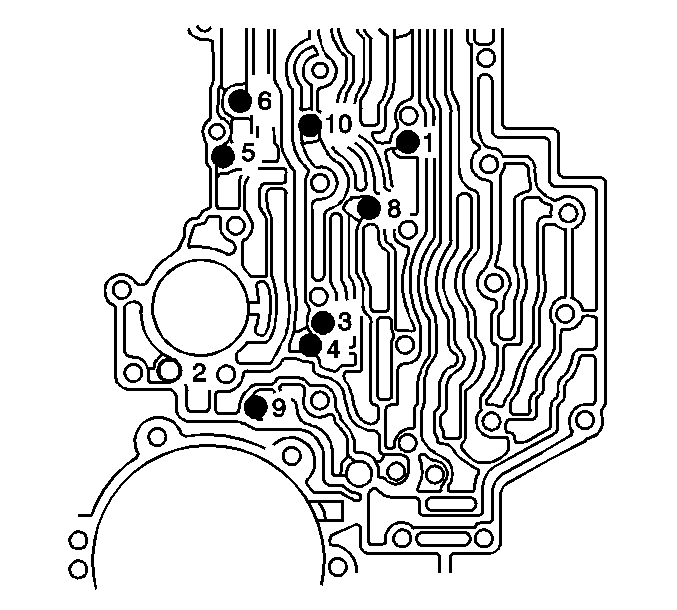
Important: Do not use a magnet in order to remove the checkballs. Using a magnet to remove the checkballs may magnetize the checkballs, causing metal particles to stick.
- Remove the eight checkballs (nine checkballs for some models).
Installation Procedure
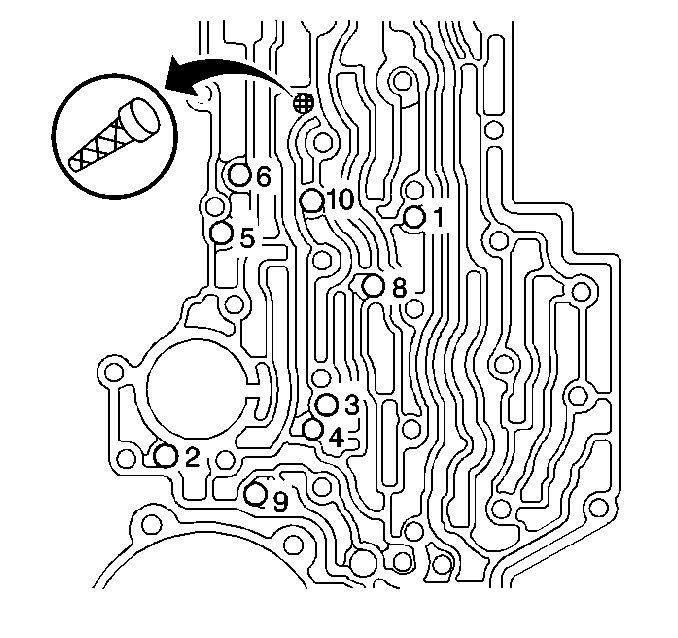
- Using the
J 36850
, install the checkballs and the PWM screen into the case.
Refer to
Component Location
.

- Install a new manual 2-1 band servo piston seal (2) onto the manual 2-1 band servo piston (3).
- Install the manual 2-1 band servo piston pin (1) into the manual 2-1 band servo piston (3).
- Install the manual 2-1 band servo piston pin retainer ring (4).

- Install the manual 2-1 band servo piston cushion spring (2).
Important: Make certain that the tapered end of the manual 2-1 band servo piston pin contacts the manual 2-1 band.
- Install the manual 2-1 band servo piston assembly (1).

- Install the manual valve (1) into the control valve body.

- To aid in alignment and assembly, install tool
J 25025
.
- Install the control valve body gasket (6).
- Install the control valve body assembly (5). Attach the manual valve to the detent lever while installing the control valve body assembly.
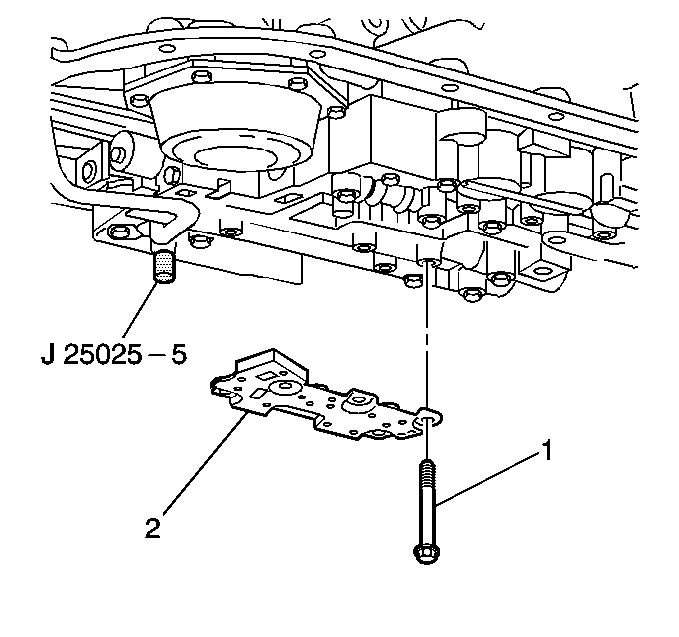
- Install the transmission fluid pressure manual valve position switch (2).
- Install the transmission fluid pressure manual valve position switch bolts (1) finger tight.
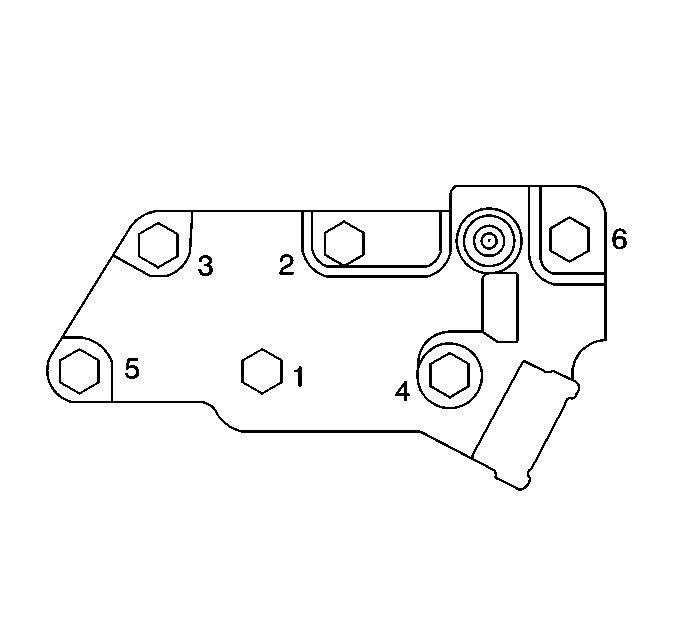
- Tighten the bolts in the order shown to 11 N·m (97 lb in).
- Remove the
J 25025
.

- Install the manual shaft detent roller and spring assembly (3) and bolts.
- Install the two wiring harness clips (1) and bolts (2).
- Install the wiring harness clip (1) and bolts (2).
- Install the lube oil pipe (5) with the short end into the control valve body.
- Install the lube oil pipe retainer (7) and the bolt (6).

Notice: Use the correct fastener in the correct location. Replacement fasteners
must be the correct part number for that application. Fasteners requiring
replacement or fasteners requiring the use of thread locking compound or sealant
are identified in the service procedure. Do not use paints, lubricants, or
corrosion inhibitors on fasteners or fastener joint surfaces unless specified.
These coatings affect fastener torque and joint clamping force and may damage
the fastener. Use the correct tightening sequence and specifications when
installing fasteners in order to avoid damage to parts and systems.
- Install the control valve body bolts.
Tighten
Tighten the bolts in the order shown to 11 N·m (97 lb in).
- Install the remaining control valve body bolts.
Tighten
Tighten the remaining bolts to 11 N·m (97 lb in).
- Connect the internal wiring harness to the valve body electrical components.
- Install the oil pan, gasket, and filter. Refer to
Automatic Transmission Fluid and Filter Replacement
.
- Lower the vehicle.
- Fill the transmission to the proper level using approved fluid.
- Fill the transmission to the proper level with DEXRON® VI transmission fluid. Refer to
Transmission Fluid Check
.
Important: It is recommended that transmission adaptive pressure (TAP) information be reset.
Resetting the TAP values using a scan tool will erase all learned values in all cells. As a result, The ECM, PCM or TCM will
need to relearn TAP values. Transmission performance may be affected as new TAP values are learned.
- Reset the TAP values. Refer to
Adapt Function
.


















